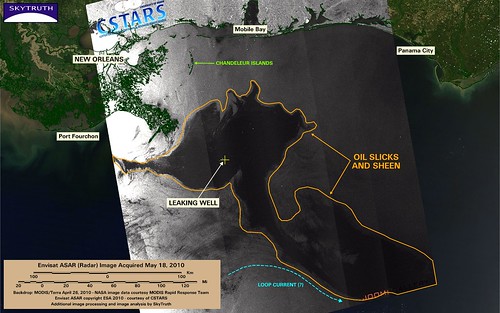the first initial casing set in the ocean floor was likely 17". maybe 15", and i suspect they have 4 or 5 casing strings that got them to 18k' total depth where they were setting this last casing string.
the riser is attached to the top of the BOP and is supported on the surface by the drilling rig, and hangs from the platform along with the buoyancy sleeves (that surround the riser joints), that helps support it's weight. everything has to happen inside this riser. the casing string that was being set at depth is supported by the drill string through the tool which holds the casing string and then at the bottom of the casing string is the foot that allows the cement to squirt out around the outside of the casing as the casing is being lowered. this is all coordinated by the casing crew as they cement the casing in place, so all the weight of that drill stem 5k' to the ocean floor and then another 18k' deep to the bottom of the hole. this drill stem would also be supporting the weight of the casing string as it is lowered down into the riser, and the sections built up one joint at a time, about 33' each most likely. this last casing would most likely be 5-6" casing since it is the final casing string and this well was gonna be released to production through that casing.
the most common concern about failure of the BOP shear rams was if the rams encountered a drill collar as it was closing and the collars are too hard for the shear rams to crimp them off. this is a known problem and some feel it is a fatal weakness, and could be the cause here too. won't know until they get the BOP back on deck.
i have only heard there was a dead battery, that has not been established, but if the rams did not push to max force then that could be the result of the the dead battery not being able to run the pump to max pressure in the BOP.
it could be that the rams closed on a collar, but that is a low probability, 6" of collar out of 33' length of drill stem is 1.5%, but i bet there will never ever be a BOP in US waters after this that does not have two sets of rams. but i bet they have to do a lot of push ups to create an entirely new BOP design.
it just seems like the scenario of having the rams actually attempt to crimp the drill stem but get deformed and stuck in their housing as they cut into the drill stem which then would be carrying all that weight, including the weight of the rig sitting on top of the drill stem as the floater sank and dropped so low in the water that the rig was actually supported from the ocean floor by the drill stem, up until it buckled. that was how the riser ended up twisted in a knot down there as the floater sank.
this is gonna be really bad, no doubt about that. most likely will be the worst of all time. but i grew up down there and when we would go to the beach, there were always tar balls in the sand, but we never had the freak out media that people have now. this was 55 years ago when the tar balls were just part of the problem from tankers pumping the water out of their holds as they arrived along the coast to pick up oil to be exported from gulf coast ports like houston. there was a time when we exported oil, many years ago. W Cote is much farther west as i recall, but they drill there too, as you know.
actually tony hayward has turned the old BP cheapskate culture around. but it does appear that the BP engineer may have felt he could get away with pumping the mud off in spite of the kicks, and then bring in the floater that would do the final completion, versus the drilling that the transocean horizon was best at, and most expensive for that reason, which would explain why the engineer woulda wanted to bring in the other floater and complete the well with it, which would explain why he decided to pump the mud off, that is gonna be the crux of the lawsuit.

